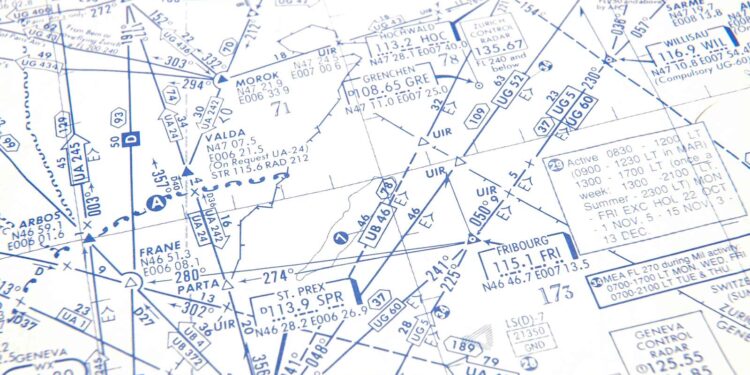Permit Requirements for Business Aviation: Part 2 – Basic Considerations

This business aviation blog post continues from our article last week, titled “Permit Requirements for Business Aviation: Part 1 – Changing Requirements Around the World.“
There are a number of basic permit considerations that must be taken into account by both private non-revenue and charter operators during the trip planning phase. “Know before you go” is always the best policy.
The following is an overview of what you need to know:
1. Specific insurance requirements
Be mindful of specific insurance requirements, and changes to such requirements, when applying for permits. Hong Kong (VHHH) mandates specific wording on insurance documents as well as minimum combined liability limits. Your trip support provider can assist with this specific wording. Be aware that when operating to the EU (European Union) liability coverage requirements are based on maximum takeoff weight (MTOW), as per insurance regulation EU785/2004. Germany and Italy have their own insurance forms that must be completed when applying for charter landing permits. Be aware that coverage limits in the EU must be stated in special drawing rights (SDRs). For Mexico, operators must have coverage that specifically includes Mexico in the policy.
2. The U.S. requires customs bonds for foreign charter operators
Foreign charter operators, in all cases, are required to have customs security bonds in place in order to operate to the U.S. There are no exceptions. Plan on lead time of at least a few weeks to have your insurance broker arrange this, as documentation needs to be furnished. In some cases operators may be able to use a customs bond associated with their trip support provider. This, however, is subject to the customs officer at your intended port of entry allowing this and your trip support provider’s legal department agreeing to it.
3. Air ambulance considerations
If you’re operating an air ambulance or diplomatic flight, permit requirements often differ and may be more lenient. In general, air ambulance permit requirements are the same as for charter operators, but lead time may be more flexible. If normal permit lead time is three business days you may be able to arrange a permit in just 12 hours – depending upon the specific circumstances. It’s important to always clearly indicate, on your permit application, that this is an air ambulance flight. Some areas – including the Caribbean, Mexico and South America – are very understanding when it comes to air ambulance permit flexibility, while other regions – including Germany and Russia – can be less lenient.
4. Diplomatic flight considerations
If you’re operating a diplomatic flight the permit process becomes an entirely different situation. In these cases, permits are normally coordinated via embassies, and there will be limitations to what your trip support provider can do to assist.
5. Additional considerations
Certain airports, including Cuzco (SPZO) and Kathmandu (VNKT), require evidence of prior simulator training, for both pilots, prior to a permit being issued. To operate to Bermuda you must have a Safety Management System (SMS) either in place on in the application process. When operating to the Philippines you’ll need to provide a color photo of the exterior of your aircraft in order to obtain a permit.
6. Unique requirements
To overfly Colombia the operator must provide serial numbers of all engines. For Vietnam operators must supply airspeed and flight levels with permit requests. Venezuela demands original documentation for permit applications, while Brazil requires crystal clear copies of all documentation. For charters to Japan, operators must provide a copy of the actual charter contract, including all passenger names and the dollar amount of the contract, before a landing permit will be issued. For ops to Haneda (RJTT) operators must provide a “Notice of Consistency,” and your trip support provider can assist with this. Be mindful of validity of crew medicals. First class medical validity can vary depending upon your destination. In Brazil, for example, a first class medical is valid for only six months for a pilot over age 40 but is valid for one year for pilots under 40. Be aware, also that some countries – including France – limit the pilot in command to age 60 for charter operations.
7. Animals, guns and vaccinations
Rules on temporary importation of pets vary widely throughout the world so beware. In the UK, for example, pets may only be cleared in at five airports. While many airports around the world may accommodate hunting guns, under strict conditions, prior notification is essential, appropriate documentation must be presented and ammunition, in most cases, may not be brought in. While passenger and crew proof of required vaccinations are not a part of the permit process if you’re not able to show proof of this on landing you may be denied entry or quarantined.
8. Penalties for non-compliance
Permit applications lacking required information/documentation will lead to delays. If you neglect to comply with the terms of your permit, or are inaccurate in your permit request, you may be subject to penalties. Leaving without a permit, for example, can have huge consequences including fines and aircraft impoundment. It’s very important to know the particular rules at different destinations. In the UK for example, you may land without an approved charter permit, but you may not depart until the permit is approved. Such operations can be a gamble.
Conclusion
Avoiding permit issues and associated operational snags must always be at top-of-mind awareness. Depending on the location, not having a correctly worded sponsor letter, lack of a required customs bond, or failure to comply with idiosyncratic permit mandates can delay or lead to cancelation of a planned international flight.
Questions?
If you have any questions about this article or need assistance coordinating your next charter trip, contact me at markhudson@univ-wea.com.




